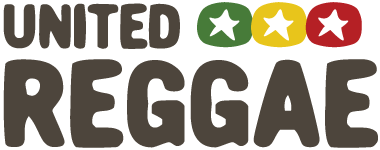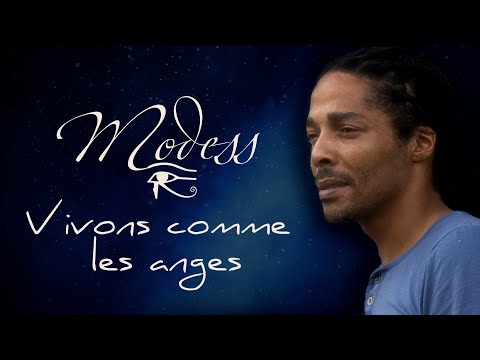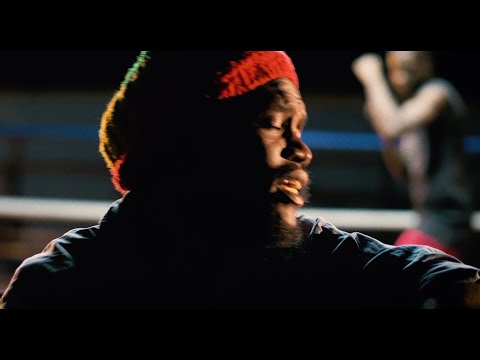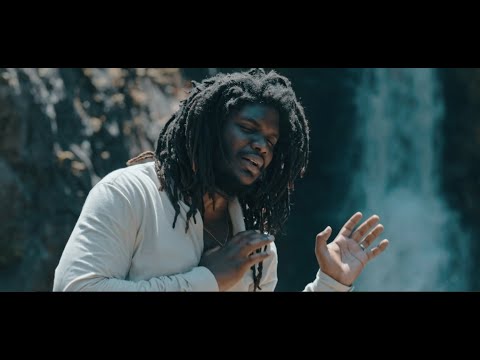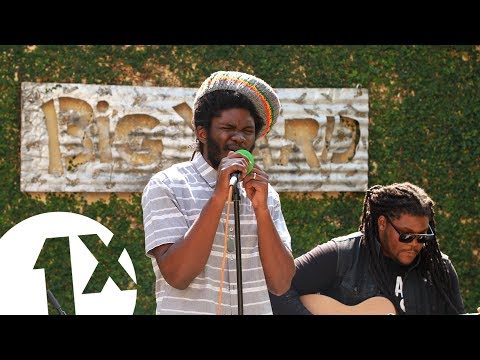Articles about reggae music, reviews, interviews, reports and more...
Interview: Roy Francis - The man from Phase One
- Home
- Articles
- Interviews
- Interview: Roy Francis - The man from Phase One

Interview: Roy Francis - The man from Phase One
"If the Chantells never had that problem they would be like Black Uhuru"
Sampler
When reggae history books mention the Phase One label it is usually in the wake of its forerunner and inspiration Channel One. Certainly Phase One did attempt to replicate the success of what the Hoo Kim brothers were doing at Maxfield Avenue: in both choice of name and the combination of sweet US soul-inspired harmonies with the “kicking and slamming” drum patterns popularised by Sly Dunbar.
Yet superficialities aside, Phase One had its own unmistakable sound: celestial, intricate and expansive. It also boasted a unique roster of artists: the harmony groups the Chantells and the Terrors, solo singers Steve Boswell and Lopez Walker, and the deejay Jah Berry.
For Roy Francis, Phase One’s founder, his mid-to-late 70s imprint was ultimately an unsuccessful venture and a cautionary lesson. The only hits came from the Chantells, and that achievement was marred by a sequence of luckless events: the group’s imprisonment in England and the loss of Francis’ master tapes. However, the label’s consistency and quality control mean its comparatively small output has been a gift to posterity, making it a favourite among collectors.
After the Chantells debacle, Francis quit producing. Today he runs Kingston’s famous Mixing Lab studio, on Dumbarton Avenue, which he founded in 1988. This is where Angus Taylor came to meet him in February to discuss the brand that brought him into reggae music.
On arrival, Mr Francis is not ensconced in an air conditioned office, but sat outside with his staff wearing shorts and a t-shirt. His accent is equal parts rock-stone Jamaican and New York jazz man (like Channel One’s own archetype, Coxsone Dodd of Studio 1, jazz is Francis’ first love).
Francis seems tickled that someone has come all the way from England to hear him recount the history of Phase One. He explains how Maxfield Avenue wasn’t just his exemplar, it was also the place where he met and recorded many of Phase One’s hallmark artists. And, how, despite losing most of his music in a flood, including recordings by the Mighty Diamonds and Errol Dunkley, he has enough material for a deejay album with Jah Berry (reissue labels take note…).
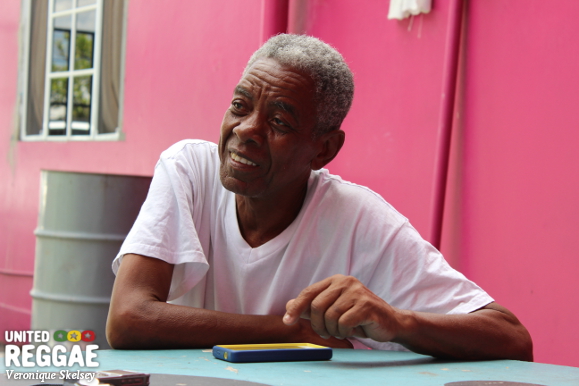
You were born in Trench Town. You spent some of your youth in Spanish Town and then when you were 17 you went to the United States to be an airline mechanic. How did that happen?
How you know all these things? (laughs) Well my father died in 1963 and left me a business. And in less than a year, because I didn’t have much experience it went down the drain. It was a business selling cloth material. Like cloth on the roll. You measure and cut it. I had no experience so it got mashed up. I wasn’t doing anything so I decided I’d go to school. I got a student visa to Teterboro School of Aeronautics in New Jersey. I spent four years in school there and then I left and went to work for Pan American World Airways.
Before you went away – what was your experience of music here in Jamaica?
Nothing at all.
You didn’t follow sound system?
I didn’t do anything! (laughs) I knew Bob Marley but he hadn’t got big by that time. He was living in Trench Town also. Him and Bunny and Peter Tosh. Me and Bob are the same age. We were born the same year. I was born in January ’45 and he was born February. So when he came from the country I knew him. They used to be on a corner every night singing. But I never knew anything about it until I came back.
Were you exposed to much American music in New Jersey?
Yes but American music today is hip hop. At the time it was something different. It wasn’t hip hop. I don’t know the name of it. It was like Stephanie Mills, Dionne Warwick, the O'Jays. My kind of music that I was into was jazz. I’m a jazz fanatic. I’m into Coltrane, Miles Davis, Jockjaw, everybody. I’m a strict jazz man. I wasn’t really following the rest of stuff.
 I’m a jazz fanatic. I’m into Coltrane, Miles Davis, Jockjaw
I’m a jazz fanatic. I’m into Coltrane, Miles Davis, Jockjaw
Your job allowed you to fly to Jamaica often.
You mean on the airline? Yes, I used to fly here because Pan Am used to fly here every day on Pan Am 222 and I would pay nothing. I’d pay like maybe ten US dollars. I used to be in Jamaica every weekend. As I got a day off – I was right in Jamaica.
So how did you get into producing music?
OK, so I was messing around with this girl whose name was Josette and she had a cousin named Gur. Derrick Smith I think was his right name. So one day Gur asked me if I wanted to do some recording.
He was the salesman for Jimmy Radway.
Right! One Foot Jimmy! So he said he had a group by the name of the Chantells. Now, I didn’t know anything about music. I was the one who was spending the money. So I said “OK, I’m going to try it”. I decided to try it and we did.
 Gur had a group by the name of the Chantells. I didn’t know anything about music
Gur had a group by the name of the Chantells. I didn’t know anything about music
Did you know One Foot Jimmy well?
Yes, in the same area. As a matter of fact I knew him before he started producing, in the early 60s. He had that one foot from long ago.
From the Kendall Crash.
Yeah from the Kendall Crash. From a little boy. But when I left Trench Town I used to move from Trench Town to Rose Lane and he used to live on Oxford Street. Then, when I left for America and came back he was a big producer. Since I came back to Jamaica I have never really met him.
So which studio did Gur bring the Chantells to for the session? And for that first session was it Gur did the actual producing - as in telling the musicians what to do?
To Randys. Gur did everything. I was a fool. I didn’t know what to do! I bought the tape, he got the musicians. All I did was pay. I was a total illiterate. I was a dunce. I didn’t know what the hell he was doing.
Who were the musicians on that Randys session?
It was Horsemouth on drums, to tell you the truth I don’t quite remember. I think it was Robbie Shakespeare who played the bass and the keyboard was a guy named Tarzan. I think so but I’m not sure. But as I said, after I was exposed by Gur, I started knowing things.
You came up with the name Phase One because it was similar to Channel One.
Yes. I liked the name Channel One so I got this guy to design the label “Phase One” with the “Phase” and the “1” at the side. Channel One was like right across. And plus, me and Jo Jo from Channel One, we were good friends. We grew up together.
 Me and Jo Jo from Channel One, we were good friends
Me and Jo Jo from Channel One, we were good friends
So he didn’t mind.
It was two different names! Phase One and Channel One so he did not mind! (laughs) He was a very, very good friend of mine, Jo Jo. But you see the problem with Channel One was I actually didn’t get a hit song out of Channel One. Most of the songs with the Chantells were done at Joe Gibbs - Waiting In The Park, Man In Love. Natty Supper and Children Of Jah we did at Randys. I think we did four.
Children of Jah, Blood River, Natty Supper and Stumbling Blocks.
Yes.
But those weren’t hits?
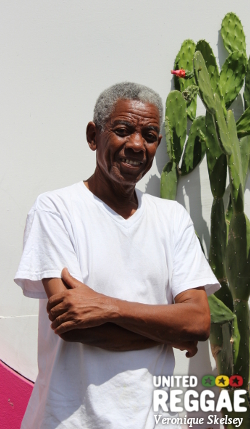 Children Of Jah was a hit. But the rest of them were like, you know…
Children Of Jah was a hit. But the rest of them were like, you know…
So next you went to Channel One. This where you got Sly on drums. What did you record there?
I went to Channel One but I did not start to record there with Chantells, just the other artists. Everything that was done at Channel One was played by Sly and Robbie and Ranchie. Because Channel One was using four tracks machine and I wanted a bigger sound. Joe Gibbs had an eight track so I went to Joe Gibbs.
Were these the sessions that became the Waiting In The Park album?
Yes, Waiting In The Park, Man In Love… I’ll tell you, I think all of their songs, away from the first four were done at Joe Gibbs.
And which musicians were you using there?
Lloyd Parks, he was on bass, a guy named Devon, he played drums, Tarzan played keyboards and I think it was Bo Pee who played rhythm guitar.
The Waiting In The Park album has the iconic cover of the three of them waiting in the park in their fine attire. I hope they were waiting for three ladies and not one!
(laughs) I don’t know what they were waiting for! But they were waiting in the park!
Maybe that’s why she didn’t come – she saw there were three guys!
(laughing) I never really thought of that! That’s kind of funny!
But that album did well.
It did very well, yes. It established the group.
Which came first? Waiting In The Park or Desperate Times (which were both on the same rhythm)?
Waiting In The Park then Desperate Times. They were on the same rhythm but we changed something. We changed the organ. That’s why I wanted more tracks. We changed the organ sound to make it sound different.
At a certain point you got fired from your job in the airline.
Yes I got fired. Pan Am went into bankruptcy so I went to work with Delta. Then I lost my job with Delta in 1975. I got fired because I kept going to Jamaica and when I was supposed to go back to work I wasn’t going on time so they got fed up with me. But I didn’t care because I wanted to spend more time in the music. I wanted to go to England and I got a vacation of two weeks once a year which wasn’t enough. If I had to go to do business in England I only got three days off like a Saturday Sunday Monday so for me to fly to London today I would have to come right back and it was too much. So I got fired but I didn’t really care. I concentrated on producing.
So by the time of these sessions with Joe Gibbs and Channel One had you learned enough from Gur to be more hands on with the producing?
Yeah because Gur wasn’t doing anything. After those four songs I left him. Me and him, well, he started to go on with some things… I learned from there and started doing my own thing.
We’ve talked about the Chantells – how did you start recording Lopez Walker who cut two songs on the same rhythm, Send Another Moses and Jah Jah New Garden, as well as Fly Away?
I met him at Channel One. One day I was there making a session when I saw this guy stand up and he called me and said “Hey, how you doing?” and I said “OK”. He said he was an artist and asked if I could do a song with him. I said “What’s your name?” and he said “Lopez Walker”. I said “OK, the next time I’m going to do a session you come”. He was there every day but he used to live in Linstead and he used to take the bus from there to hang out there waiting on me. So I did some recording with him. Jah Jah New Garden, that was Ranchie who played that bass. I can’t remember which rhythm was what.
Then Jah Berry did a deejay cut to Jah Jah New Garden called Daily News. How did you meet him?
Meet Berry? Same place – at Channel One! You know I have an album with him? I’ve got a lot of stuff right now with Jah Berry on quarter inch tape that never came out.
 I’ve got a lot of stuff with Jah Berry on quarter inch tape that never came out
I’ve got a lot of stuff with Jah Berry on quarter inch tape that never came out
Someone should link you to reissue it.
I have them in the vault right there. I think I’ve got nine songs with him. He’s living in New York right now. I heard he’s driving a truck. I’ve never seen him again.
How about Steve Boswell – who sang two minor key dread songs Cool Rastaman Cool and I’m Getting Bad?
I knew him from Rose Lane. When I came back to Jamaica my mum used to live in Rose Lane. He was a very good singer but the reason why I only did two songs with him was he was pressuring me for money. He kept bothering me every day. Jo Jo at Channel One said “Right, do an album with this guy, he’s a very good singer” but I couldn’t take the pressure. He was a problem with money.
They were great tunes.
They were great, great stuff.
I have a US press record of a cover of Dennis Brown’s Changing Times by Paul Powell. Can you tell me about him?
Yes, Paul Powell. He’s living in Canada right now. I met him through Bo Pee the guitarist. Bo Pee and him are cousins. He introduced me to him and I only did one track with him.
The Terrors also came to you and you recorded Assemble Not Thyself.
All of these people I met them at Channel One. It was the same thing with the Terrors. We had a problem. It was a group of I think three or four and we had a problem with one of them. In every group, one person is a problem you know? Like the Diamonds – the one named Bunny, he is a problem. Everybody is OK except him. The same thing with the Terrors – this one little guy. We couldn’t get along so I said “Forget about it!”
 In every group, one person is a problem
In every group, one person is a problem
And how about Errol Davis who sang Paths I Have Taken?
I met him through Tommy, who was one of the Chantells. I did one track. I can’t even remember the name.
Tell me about making the two volume dub set Phase One Dubwise.
Well the dub album we made it from the tracks. All of the tracks are from Waiting In The Park. So we did a dub album. Jammys – he mixed some, we mixed a couple at Channel One, we mixed some at Tubbys, we mixed some all over. That was my idea – to take the rhythms and make a dub album.
How did you find working with the various engineers?
I knew them well. They were very good people but where they were at the time… I didn’t like to go to Waterhouse. I was afraid of those places. Because it was a bad place. I didn’t want to go there. Most of the time when I was going there I used to take some friends with me. My first stop was Channel One or Joe Gibbs. You know the guy who worked with Jammys? What’s his name? He had a studio in Waterhouse and he died? King Tubbys. Jammys used to work at King Tubbys so that’s where I used to go and mix. Jammys did a couple, Tubbys did a couple for me and then a couple were done at Channel One, so it was all various different people.
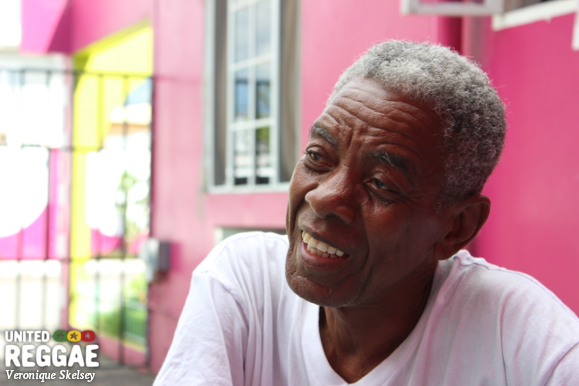
Why did Phase One stop? Is it because the Chantells went to the UK and got busted for herb?
Yes. That messed up my career completely.
What happened?
I don’t know what happened. When I went to England I met this guy named Joe who said he wanted the group to come up and do some music. He bought the tickets. He bought everything. So when I was in Jamaica and I got a phone call that the three of them are in jail. They hold them with maybe twenty or ten pound of weed in Heathrow Airport. I said “Fuck me!” Then it was like I got involved too because you never had cell phones then, you had landline. I picked up the phone one day when somebody called me, some guy asked me if it was me who sent the stuff for him. It was a customs guy. So I said to myself “What stuff he talking about?” I said “I don’t know what you’re talking about man” and he hung up the phone. They wanted to know if I was involved and I was not. That ended my career right there. These guys were my main act and then with this guy calling me and asking me about weed and shit I didn’t want to go back to England. I might go there and end up in jail!
 I got a phone call that the three of them are in jail. They hold them with maybe twenty or ten pound of weed
I got a phone call that the three of them are in jail. They hold them with maybe twenty or ten pound of weed
How long where they in jail for?
I think they were in jail for a couple of weeks and they got bail and came out. One of them got 18 months. Leslie Thomas. And the other two got away.
Sam Bramwell went on to do some solo stuff. He was a very promising singer.
Yes he did solo stuff for this guy Germain at Penthouse. He did a couple of solo songs for him.
Then he was killed by police.
Yes but I wasn’t here. I was in America. After the whole incident I went back to America and started to work because I didn’t have a music career going on here anymore. So I went to work in a construction company.
 Greensleeves called me so I was recording
Greensleeves called me so I was recording
And is it right that your friend’s basement was flooded and you lost some of your tapes?
I lost all of my tapes.
So how much unreleased material did you lose?
A lot man! The same girl that let me know Gur, me and her broke up so I flew away to New York and took away all my tapes. It wasn’t many – maybe about ten or twenty tapes. For Channel One it was half inch and Joe Gibbs it was one inch. I took them to this guy who was a friend of mine and told him to keep my tapes for me and all my jazz records – big collection. I left them there.
So you lost all your jazz records too?
I lost every damn thing man. I was collecting jazz from 1966 in New York and I think the guy’s place flooded out in 1975 or ‘76. In the guy’s basement they had a boiler and the boiler burst and blew up. Pure hot water messed up my records and when I went back there the tapes were no good. So I didn’t have the masters any more.
How many tracks did you lose? Which artists?
I think I lost maybe about 90 or 100 tracks of unreleased material. I think about six more with Chantells, I had a couple with the Diamonds, I got a couple with Barnabas who played drums. I did one with him named Sister Fay – you remember that one? And I did a couple with Errol Dunkley. Look here – you know who called me to come to England to do some big business with them? Greensleeves. Greensleeves called me so I was recording boy! Shit man. I had the big man round here now so I started to record lots of artists.
 I lost 90 or 100 tracks of unreleased material
I lost 90 or 100 tracks of unreleased material
I can’t believe the world was robbed of Phase One tracks with Errol Dunkley and the Diamonds.
You name it… I was recording a lot of guys like U Brown. Because Greensleeves, at that time, Junjo Lawes, he was nowhere around! I didn’t even know this guy! You remember Junjo Lawes got big with Greensleeves and with Volcano label. I was bigger than him. That one incident messed me up.
So you went back to work in construction.
I went back to New York because my tapes got messed up and I lost them. So I just got fed up. The group was in England having a problem. In those days if you couldn’t go to England that was the cream of the pie in reggae. America never messed with reggae. England and Europe was the reggae market. So I went back to New York and worked in a construction company because I couldn’t get back an airline job. They were laying off people and when you’ve been fired from a job then they are going to ask where you last worked and if you tell them you got fired they’re going to ask you why and because of my reason I would not be able to get back a job with any other airline.
Yet here we are at your famous studio. So how did you get back into the music again?
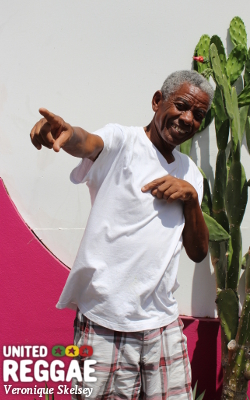 OK, another thing. I started to save up some money and I met a guy named Clifford. He had a little studio in his basement. So you know I have a love for the music. I love the reggae music. This guy had a little four track machine and I used to go in there and we would sit and talk. He was actually doing nothing but he was my friend so I said “Clifford, you know I actually want to go to Jamaica and build a very nice studio” because there no good studios here except Tuff Gong and Dynamic. Randys, I think had closed down then.
OK, another thing. I started to save up some money and I met a guy named Clifford. He had a little studio in his basement. So you know I have a love for the music. I love the reggae music. This guy had a little four track machine and I used to go in there and we would sit and talk. He was actually doing nothing but he was my friend so I said “Clifford, you know I actually want to go to Jamaica and build a very nice studio” because there no good studios here except Tuff Gong and Dynamic. Randys, I think had closed down then.
When were you having this conversation?
About 1986. He said “Yeah, that would be a good idea Roy, because if you go there and I have a studio we could interchange productions”. I said “OK”. Anyway in the construction business I used to make big money. I used to tie steel making $20 US an hour and in 1986 that was a whole lot of money. I worked ten hours a day so it was $200 a day and I was making $1200 a week and after tax I’d take home a grand. So that’s four grand a month. That’s a lot of money. I worked in the construction business for about four years, saving my money and getting my tax return. I had like $400,000 by 1987. So I decided “Shit, I ain’t going to work no damn more. I’m coming here to build me a studio”.
Who helped you build it?
Nobody. I just came back, I bought this place. When I bought this place it was just a little building – from right there where you see that box to right there. So I had to build this building with the studio. I built it myself, flew back to Florida and bought all the equipment. I knew Jamaica needed another studio because Randys had closed down, Harry J wasn’t doing too well, the guy up on the hill, Chris Stanley, Music Mountain, wasn’t either. So two studios were carrying the swing which was Dynamic and Tuff Gong. I came and I built a state of the art studio in 1988. I came and built something totally different. This white guy in America he designed it and built it, sounded it and everything. I got a lot of envy when I built this studio.
 I came and I built a state of the art studio in 1988
I came and I built a state of the art studio in 1988
What has been the highlight in terms of what came through your place?
There’s been a lot of hits. Like Shaggy, Black Uhuru, all these guys, Beres Hammond, all of them came through here. What really messed up the studio business in Jamaica was the computer, the digital stuff. Because when I came here in ‘88 for you to build a studio you had to have a lot of money. The console is 80 grand, the tape machine is 40 grand. Who could afford it? Nobody. Now you can build a studio for $1000 US. You buy a little computer, a little box and you have a studio. In those days you used to have to have a lot of money so all those guys passed through my studio.
There was a 1999 Blood and Fire reissue of Phase One which introduced a lot of new listeners to the music.
Yes, Steve Barrow licensed some of the songs. I licensed them to him. But the other guy in England who I used to do business with, his name is Paul Froelich, he has all my tapes and he is actually bootlegging my stuff in England right now.
How did he get the tapes?
Because me and him were doing business. He used to do my business for me in London. I used to take the tapes, cut stamper there, press, and he’d send my money to me. So when the whole thing happened and I didn’t go back to England and everything mashed up, he started to do a lot of reissues. The only thing he couldn’t do is license it to somebody because then I could put a stop order on it because he doesn’t have the right to do it. But he’s pressing them underground and making CDs and all that kind of stuff.
So all in all, the Phase One period wasn’t as happy an experience as the Mixing Lab but in artistic terms of the value of those recordings is extremely high.
You mean the Phase One? Of course. It’s not like the 80s recordings. Those recordings are from the early 70s. They are the ones that have the value. Not like this new stuff. I don’t even produce anymore. The business changed.
Phase One was also a very consistent label. I’d be hard pressed to name a bad tune.
Yes I was doing some very, very good work. You know what’s so funny? When I did Waiting In The Park I didn’t like that rhythm you know? And it became a hit song. Lloyd Parks played the bass and I said “Lloyd, I don’t like that bass you know?” Lloyd said “Riiiight… that bass wicked you know?” But it was a hit song. Waiting In The Park was playing all over London – that was what bust the group. If they never had that problem they would be like a Black Uhuru or something like that. I had some Chantells with Samuel Bramwell on that tape that I lost. I had about six or seven tracks. I had him solo too. Him and the group had some problems so I used to take him to Channel One by himself without them knowing. He was a great singer man. He was from St Thomas. A great singer.
Read more about this topic
Comments actually desactivated due to too much spams
Browse by categories
Recommended Articles
Latest articles
Recently addedView all
© 2007-2025 United Reggae. All Rights Reserved. Reproduction in whole or in part is prohibited. Read about copyright
Terms of use | About us | Contact us | Authors | Newsletter | A-Z
